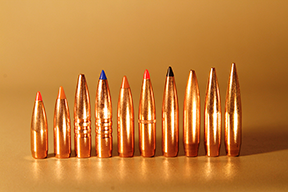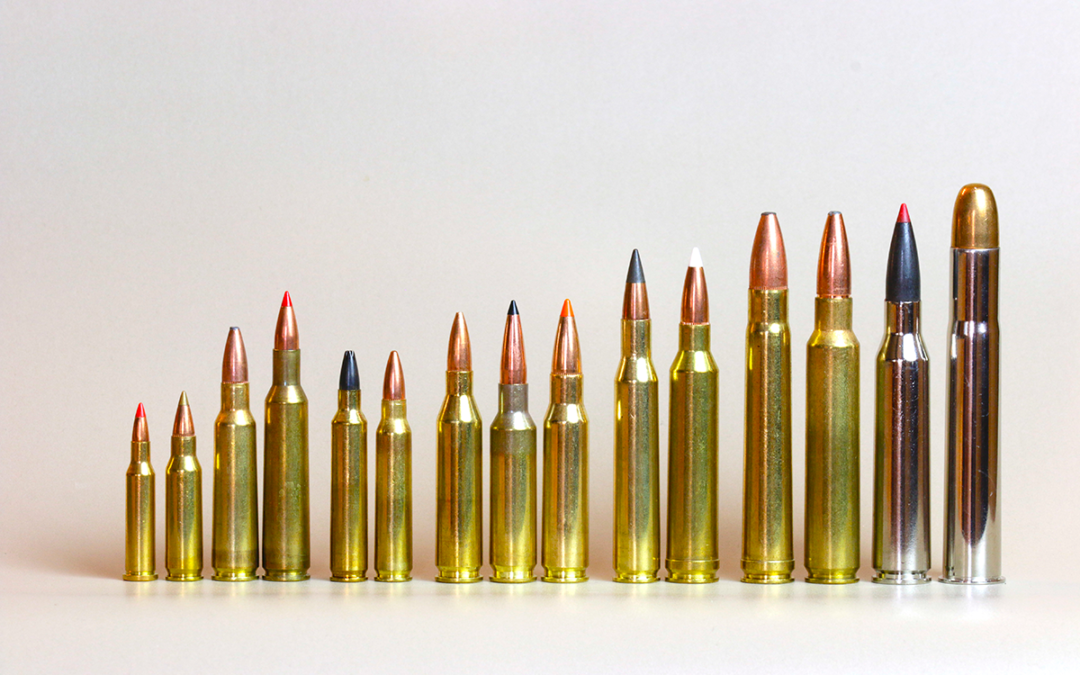“It’s just those gun and ammo companies trying to gin up sales!”
But of course. What business goes into business in order to conduct less business? A user, if not aficionado, of guns, cartridges, shooting and hunting who opposes more and better products for shooting and hunting seems better suited for ping pong. No confusing innovations there.
Gun and ammo companies have been ginning up sales through cartridge innovation since at least 1892. That is the year Peter Paul Mauser created his 7x57mm Mauser cartridge. It was subsequently proven “good enough” for not only war, but terminating every potential dinner guest from bunnies to buffalo with more than a few 12,000-pound pachyderms as appetizer. Scotsman “Karamoja” Bell felled roughly 800 elephants with an average of 1.5 shots per each with his 275 Rigby, the British designation for the 7×57 Mauser. Enough gun.
The 30-30, 30-’06, 300 Savage, 270 Winchester, 300 Win. Mag. and all the rest were just needless excess foisted on an unsuspecting public to drum up sales. Greedy gun and ammo companies.
Of course there is the tint of sarcasm in the foregoing paragraphs. The truth is our endless reinvention of the centerfire rifle cartridge is more a product of human curiosity, creativity and inventiveness than corporate greed. Yankee ingenuity will out. Just as golfers strive to engineer the perfect putter and bowhunters the perfect broadhead, rifleman tinker to create the perfect cartridge. Over and over and….
The list of wildcat and proprietary cartridges concocted over the past century paints commercial manufacturers as inconsequential slackers. No sooner did the 30-’06 hit the shelves than out of the workshop of various elves came the 25 Niedner, the 7mm-06 aka 285 OKH, aka 7mm-06 Mashburn. And of course, the 35 Whelen, 400 Whelen, 416-06 JDJ, 338-06, 6.5-06 and even the 243-06, aka Kenny Jarret’s 243 Catbird driving an 85-grain bullet 3,800 fps. Those are the more visible chunks of this iceberg. There is the long line of Gibbs cartridges from the 1950s. The 30-’06 Springfield itself evolved from the 7×57 Mauser case. Same rim diameter, same body diameter. Uncle Sam’s engineers just stretched the Mauser a bit and modified the taper and shoulder slope slightly.
Unsatisfied with such horrendously long cartridges, wildcatters spied the 308 Winchester case and began making the case for short-action cartridges. Shorter, after all, is better. Oddly, the 308 Winchester itself was almost an original creation by an actual commercial ammunition manufacturer. Here’s what happened. Winchester, responding to a Franklin Armory (U.S. military) adaptation of the 300 Savage known as the experimental T65, grabbed that design and introduced it to the hunting public as the 308 Winchester in 1952, two years before NATO adopted it as the 7.61×51 NATO and five years before that round replaced the 30-’06 in U.S. Army rifles. So, while Winchester might not have concocted the 308 Winchester, aka 30-’06 Short, it had the insight to recognize a good thing and won the day, plus the next 65 years and counting. The 308 Win. is one of the three most popular hunting rounds in the world. And the most popular springboard for new creations to gin up sales.
I’m not buying it, but many are. Cartridges the 2.81-inch overall length of the 308 Winchester are magic. More efficient. Easier to carry. Inherently more accurate! Modern and just plain essential. All the top benchrest shooters have subscribed.
And so we have the 6.5 Creedmoor. And before it the 7mm-08 Remington and 260 Remington. For a time, it seemed that short was all it took to sell a new cartridge, which may explain why Winchester leaped from its initially successful 300, 270, 7mm and 325 WSM short-fats to its ill-advised 223, 243, and 25 WSSM super shorts. To keep pace, Remington fast-tracked it’s 7mm and 300 SAUM entries. All faded quickly enough that it didn’t sell itself short with even more abbreviated rounds, opting instead to focus on its more successful efforts in the opposite direction—the magnum length Remington Ultra Magnums. Take that, Shorty! 
None of that stopped Ruger from campaigning its short-action 375, 338, and 300 Compact Magnums. Each of them seems to be faring better than the Remington shorts and all but the 300 WSM. With this springboard still quivering, in 2018 Hornady squeezed the neck of the 300 Ruger Compact Magnum to make not the 6.5 RCM, but the 6.5 PRC, Precision Rifle Cartridge. Despite short-cartridge overkill, this short-fat round seems to be chugging right along, threatening to displace the older but ballistically similar 6.5-284 Norma.
Ah, options, options, options.
No wonder shooters are beginning to weary. Or are they?
Sig Sauer felt the marketplace accepting enough to introduce its wild, short-action 277 Fury in 2019. Nosler continued its short-magnum line (albeit shortened only to 30-’06 length) with the 27 Nosler, complementing its 26, 28, 30 and 33 Nosler rounds.
And rumor has it we haven’t seen the end of new cartridge introductions. But short will no longer be enough. The real deal is bullet efficiency and rifling twist.
Sure, everyone understands the need for speed. But speed without efficiency bleeds trajectory, increases wind deflection and wastes kinetic energy in battles with the atmosphere. Seriously tilting at windmills.
High B.C. bullets are and will continue to be the real drivers of new cartridge innovation. The infamous 6.5 Creedmoor is Exhibit A. Consider. Here is a puny little round introduced into a world of 3,000 to 4,000 fps muzzle velocity that is lucky to break 2,700 fps. Properly loaded, the 6.5×55 Swede does that. And it’s celebrating its 130th birthday in 2021.
No, the Creedmoor didn’t succeed by speed. It won with efficiency. Small powder volume to conserve barrel life. Fast (1:8 inches) rifling twist to stabilize long bullets. High B.C. bullet designs to minimize wind deflection and conserve what little kinetic energy it sent flying. It’s proven a winning formula. Short, handy rifles easy to carry for tight cover hunting. Light recoil for precision shooting. Long, sleek bullets for efficient trajectory. Energy enough at extreme distances to exceed even that of 300 magnums throwing less efficient 180-grain bullets. Crazy. But real.
So gird your loins. There’s more coming. The 27-calibers are the latest to get the fast twist treatment. The 22s and 24s have already jumped in. The 25s are due. The platforms are out there. Neck ’em down. Shape ’em up. Twist ’em tight. Regardless the powder volume, long, heavy-for-caliber, aerodynamically efficient bullets in fast twist barrels will be driving future cartridge development.
Hunting will never get old, but 20th century bullet designs will.
 “The ideal backcountry axe should excel at its intended use and ideally provide additional versatility. In this case, the Kisa fits the bill for me. It has enough head weight for felling, bucking and even splitting small to medium logs but is light enough that it’s not unreasonable to carry over distances when needed.” —Hults Bruk Ambassador Rick Spicer Weight (lbs) 2.85 Head Weight (lbs) 2 Handle Length 26″ Buy Now
“The ideal backcountry axe should excel at its intended use and ideally provide additional versatility. In this case, the Kisa fits the bill for me. It has enough head weight for felling, bucking and even splitting small to medium logs but is light enough that it’s not unreasonable to carry over distances when needed.” —Hults Bruk Ambassador Rick Spicer Weight (lbs) 2.85 Head Weight (lbs) 2 Handle Length 26″ Buy Now
